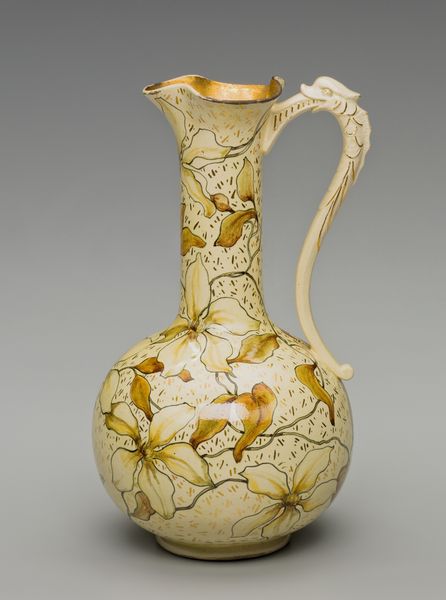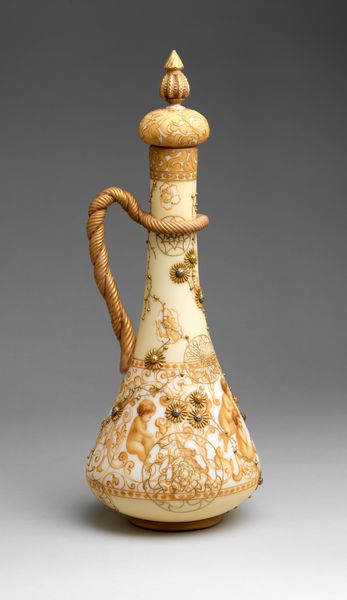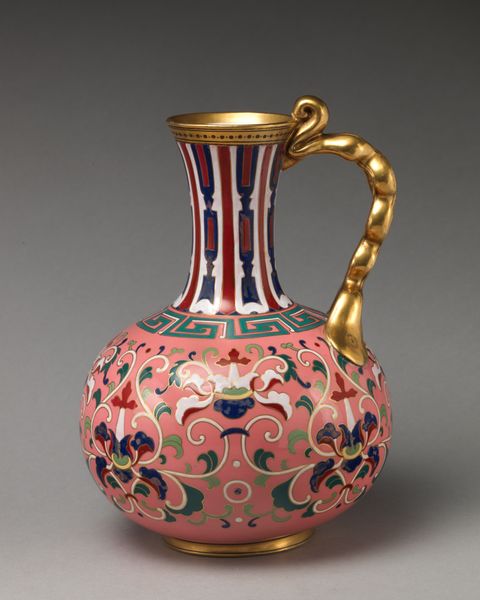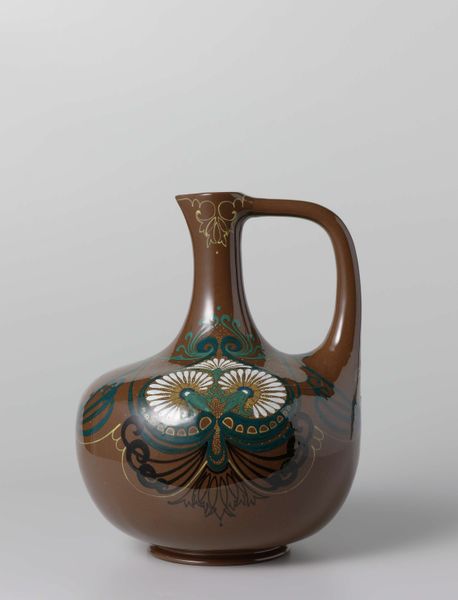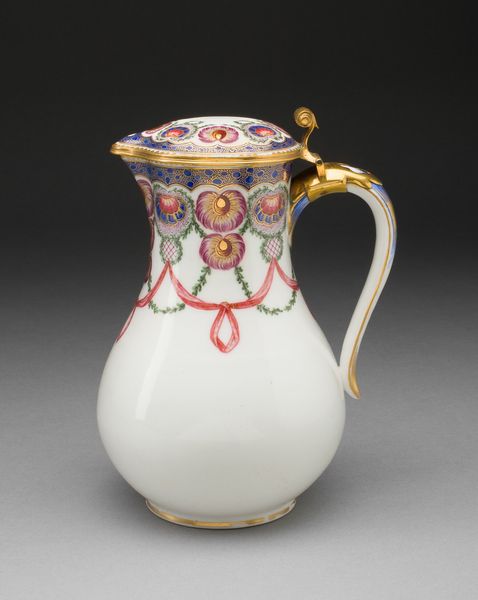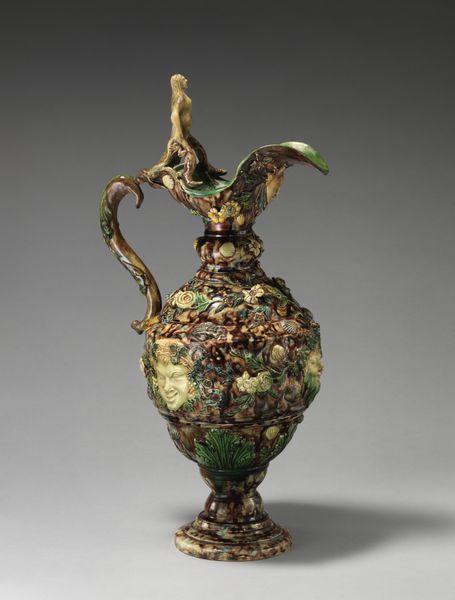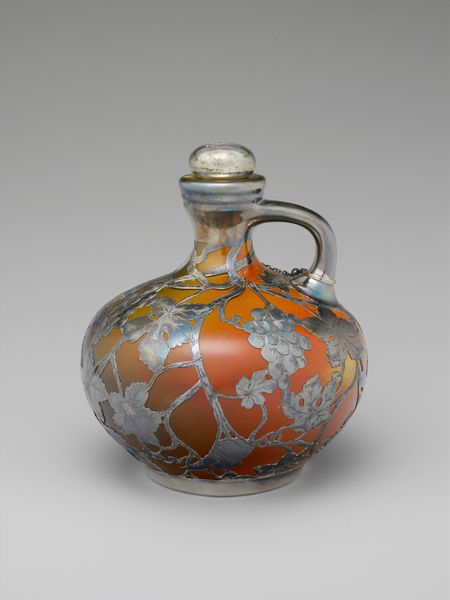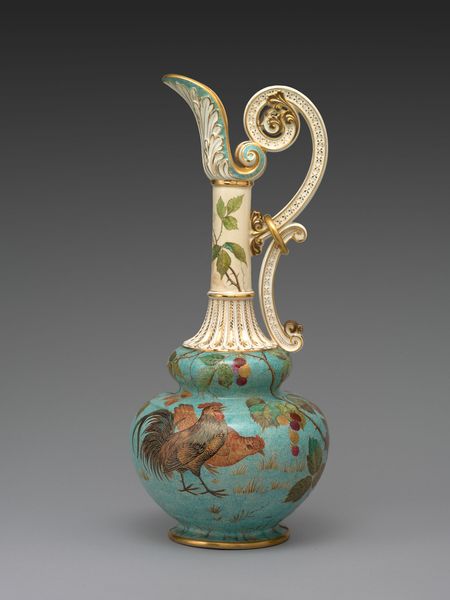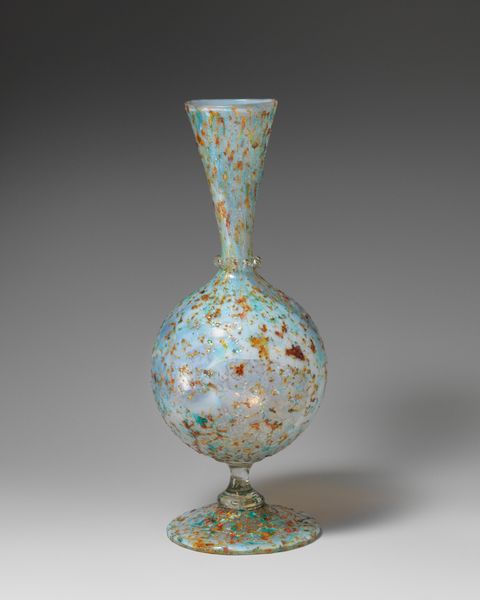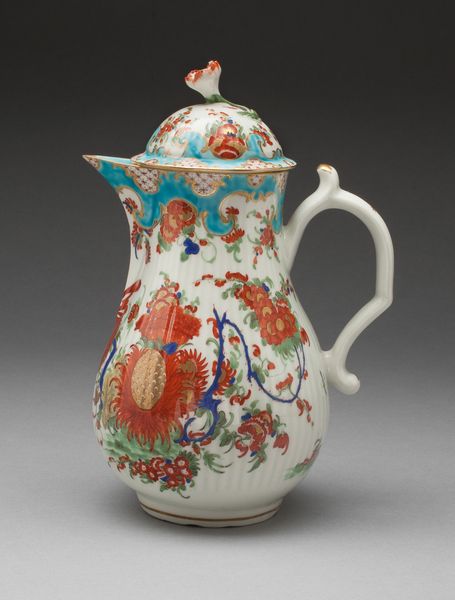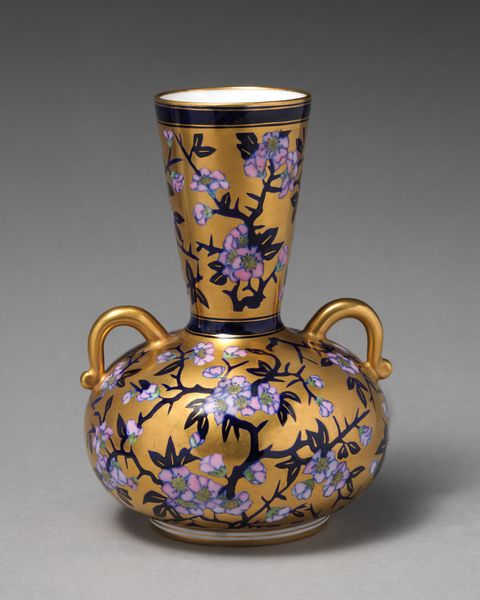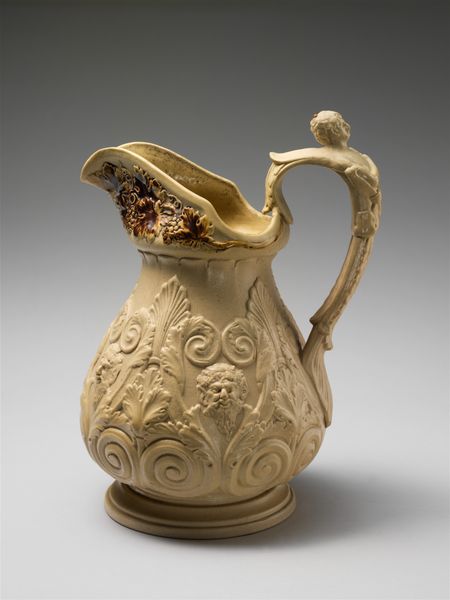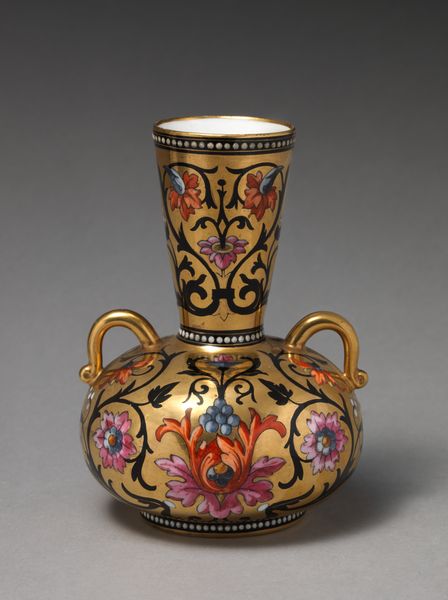
mixed-media, painting, ceramic, impasto, earthenware
#
mixed-media
#
painting
#
ceramic
#
bird
#
impasto
#
earthenware
#
fruit
#
ceramic
#
decorative-art
Dimensions: H. 15 x 8 in. (38.1 x 20.3 cm)
Copyright: Public Domain
Editor: So this lovely Ewer, crafted by the Faience Manufacturing Company between 1886 and 1890, feels really delicate despite being made of earthenware and ceramic. It is so ornate and detailed! I wonder, what do you find most compelling about this piece? Curator: I find it fascinating how this ewer exemplifies the decorative arts movement's embrace of nature and its role in democratizing art. During this period, there was a significant push to integrate art into everyday life, making it accessible beyond the elite circles. What do you make of the natural imagery – the birds, fruit, and foliage? Editor: It makes me think of wallpaper! It’s decorative, almost like a pattern repeating around the form. Curator: Precisely! Consider the socio-economic context: factories began to mass-produce these pieces making it more available to a burgeoning middle class eager to display its access to consumer goods and, in effect, gentrify their homes and social standing. The delicate rendering, almost like a watercolor painting, belies the industrialized means of production. The image isn't simply a pretty design; it’s tied to class aspirations. How might the ownership of such an object reinforce certain social hierarchies? Editor: So, owning something that looks hand-painted gives the appearance of wealth and cultivated taste without actually requiring old money. It is a type of aspiration. Curator: Exactly. The ewer reflects the aspirations and anxieties of a changing society grappling with industrialization and its impact on social structures. We need to see beyond the surface of "decorative art". It speaks volumes about class, industrialization, and access. Editor: This makes me rethink how I view decorative arts. It is an indicator of shifting values. I assumed they were 'lesser than' ‘fine art’ but this explains how wrong I was. Curator: Yes! We must view this Ewer as a visual record of its era, rather than just a pretty object.
Comments
No comments
Be the first to comment and join the conversation on the ultimate creative platform.
